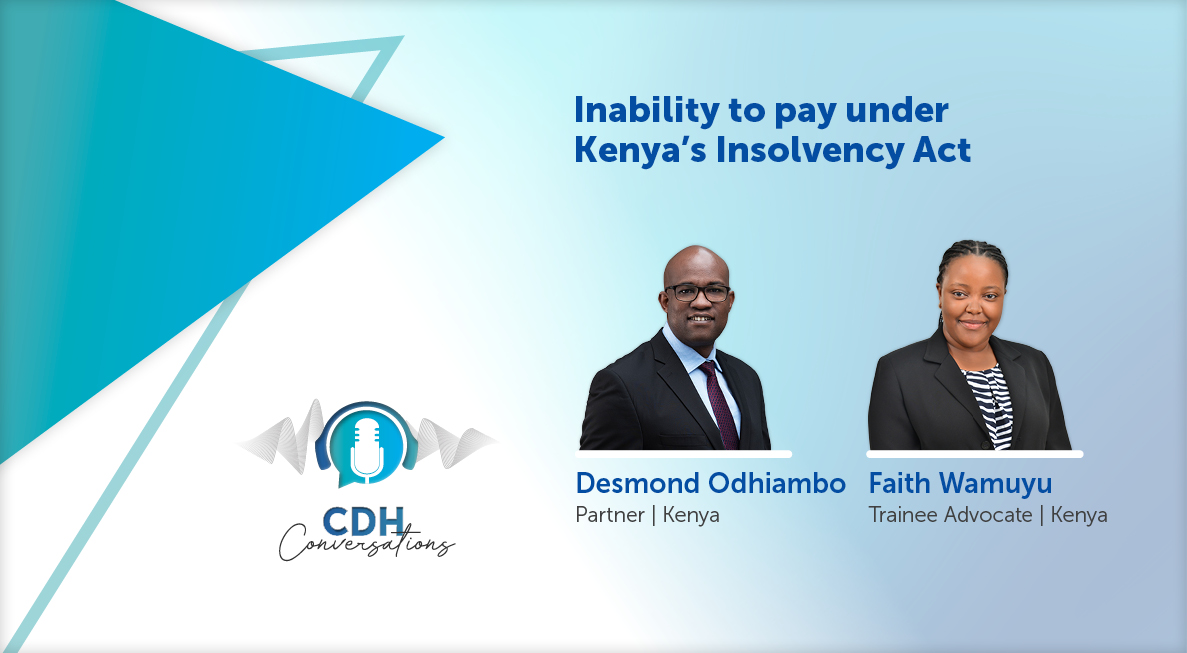Infrastructure development act signed into law
After causing a fair share of controversy, the Infrastructure Development Act, No 23 of 2014 (Act) was signed into law by the President on the 30May 2014.
The Infrastructure Development Bill (Bill) was introduced into the National Assembly on 4 November 2013 in an attempt to prioritise (and thereby speed up) infrastructure development. It triggered a flurry of responses from interested parties. Three days of public hearings were held in the National Assembly from 14 to 16 January 2014. Interested parties made written submissions, as well as presentations at the public hearings. Deliberations on the submissions were made, and amendments were effected. The Bill has now passed, in amended form, through the National Assembly, the National Council of Provinces, and has been signed by President Jacob Zuma. It will take effect on a date yet to be proclaimed by the President.
In 2012, a National Infrastructure Plan with 18 identified Strategic Integrated Projects (SIPs) was developed and adopted by Cabinet and the Presidential Infrastructure Coordinating Commission (which is responsible for the selection, planning and monitoring of large infrastructure projects in South Africa). The National Infrastructure Plan is a policy originating in the Economic Development Department. The draft Bill was introduced to achieve the objectives of the National Infrastructure Plan. It aimed to fast-track strategic infrastructure delivery by shortening the time required to obtain regulatory approvals required for the Projects.
The Act has the following salient features:
- It establishes the structures of the Presidential Infrastructure Co-ordinating Commission (PICC).
- In the first instance, the PICC acts through the Council (s3(a) of the Act). The Council’s overall responsibility is to ensure the development, maintenance, implementation, and monitoring of the National Infrastructure Plan.
- It establishes the Management Committee to support the Council in carrying out its functions and to oversee the functions performed by the Secretariat.
- It establishes the Secretariat which is principally tasked with coordinating the implementation of any SIP by appointing members to a Steering Committee established for each SIP, and directing the work of each Steering Committee.
- It establishes a Steering Committee to facilitate and monitor the implementation of a SIP. The Steering Committee, chaired by a SIP coordinator appointed by the Secretariat, is required to identify the different projects constituting a SIP, and to identify the ways and means of giving effect in the 'most effective, efficient and expeditious manner' of implementing a SIP. For example, the Steering Committee is required to identify all approvals and licences required for the SIP and take all reasonable steps to assist in obtaining these. To this end, the Steering Committee is required to develop and adopt a project plan for each SIP for approval by the Secretariat.
- It provides for the designation of SIPs under particular circumstances. In particular:
- The PICC (through the Council) is responsible for designating SIPs (s4(c) read with s8(1)(a) of the Act). Where the PICC determines that a SIP be implemented, the PICC (in consultation with Cabinet) can instruct the Minister of the relevant department in whose portfolio the SIP predominantly falls to instruct its department to undertake a SIP or to advertise for tenders where all or part of the SIP needs to be undertaken by parties other than the state.
- Organs of state affected by a SIP need to align future planning or implementation of infrastructure or future spatial planning and land use with the SIP
- It provides for the PICC to expropriate land, in terms of the Expropriation Act, for the purposes of implementing a SIP.
- It provides compulsory timelines for the implementation of the SIP.
- It provides a list of the SIPs in existence at the commencement of the Act.
In its final form, the Act looks similar to its predecessor Bill. Important specific changes are discussed below.
Process and periods
The most consistent complaint across the submissions related to the 'Process and Periods of Time' set out in Schedule 2 of the Act. S17 of the Act provides that the processes listed in Schedule 2 provide a framework or guide for the implementation of any SIP, and that the timeframes prescribed may not be exceeded. In its submissions, Telkom suggested that the timelines in Schedule 2 were unrealistic. The Centre of Environmental Rights suggested that the 'fast-track' effect would drastically reduce the time absolutely necessary (and legally required) for assessing environmental and social impacts. The South African Local Government Association (SALGA) submitted that the timeframes were unreasonable and bore no relation to existing legislation regulating land development. Business Unity South Africa suggested that a better approach to timeframes would be a more flexible one – the relevant steering committee should determine upfront a realistic (and aggressive) timeline.
Ultimately, the timeframes have remained unchanged in the Act. However, the legislature has added new clauses to s17. These provide a mechanism for extending the period for completing a process, if the relevant official makes a written request to 'the executing authority'.[1] This mechanism may prove unsatisfactory if the schedule 2 timelines are severely unrealistic, or the extension mechanism proves to negate the intention to speed up infrastructure projects.
Expropriation
S5 of the Act, the expropriation clause, allows the PICC to expropriate land for the purposes of implementing a SIP. Telkom, SALGA and the IDC made submissions on the validity of the expropriation clause. Parties questioned whether it was necessary for the PICC to effect expropriation when the entity implementing the project should be responsible for this aspect. However, the expropriation clause has remained, albeit in a more elegantly-worded form. The new clause requires the PICC, before expropriating land, to consult with the organ of state in whose favour the expropriation is to be made.
Does the Act have teeth?
Many of the submissions to Parliament expressed appreciation of the Act's attempt to reduce bureaucracy associated with infrastructure development, and so speed up infrastructure rollout. However, there was a clear worry that the Act would have the reverse effect – it would add an extra layer of necessary regulation, and slow down the broader process. The Act offers only two real mechanisms (or incentives) to achieve its aims:
- it puts in place fairly strict timeframes for obtaining necessary approvals; and
- it tasks Steering Committees with providing concrete assistance to SIPs.
Steering Committees are required to identify all necessary authorisations, licences, permissions and exemptions and instruct the applicant to submit applications for these simultaneously. Steering Committees are also required to ensure that applications are complete and compliant and to monitor processing of applications.
Cynics will argue that neither of these measures will assist in speeding up infrastructure development, since none of the existing legislative red tape has been removed. The Act has nevertheless been signed by the President. Time will tell whether infrastructure development is improved or hindered as a consequence.
[1] The term "executing authority" is not used anywhere else in the Act and is not defined.
The information and material published on this website is provided for general purposes only and does not constitute legal advice. We make every effort to ensure that the content is updated regularly and to offer the most current and accurate information. Please consult one of our lawyers on any specific legal problem or matter. We accept no responsibility for any loss or damage, whether direct or consequential, which may arise from reliance on the information contained in these pages. Please refer to our full terms and conditions. Copyright © 2026 Cliffe Dekker Hofmeyr. All rights reserved. For permission to reproduce an article or publication, please contact us cliffedekkerhofmeyr@cdhlegal.com.
Subscribe
We support our clients’ strategic and operational needs by offering innovative, integrated and high quality thought leadership. To stay up to date on the latest legal developments that may potentially impact your business, subscribe to our alerts, seminar and webinar invitations.
Subscribe




